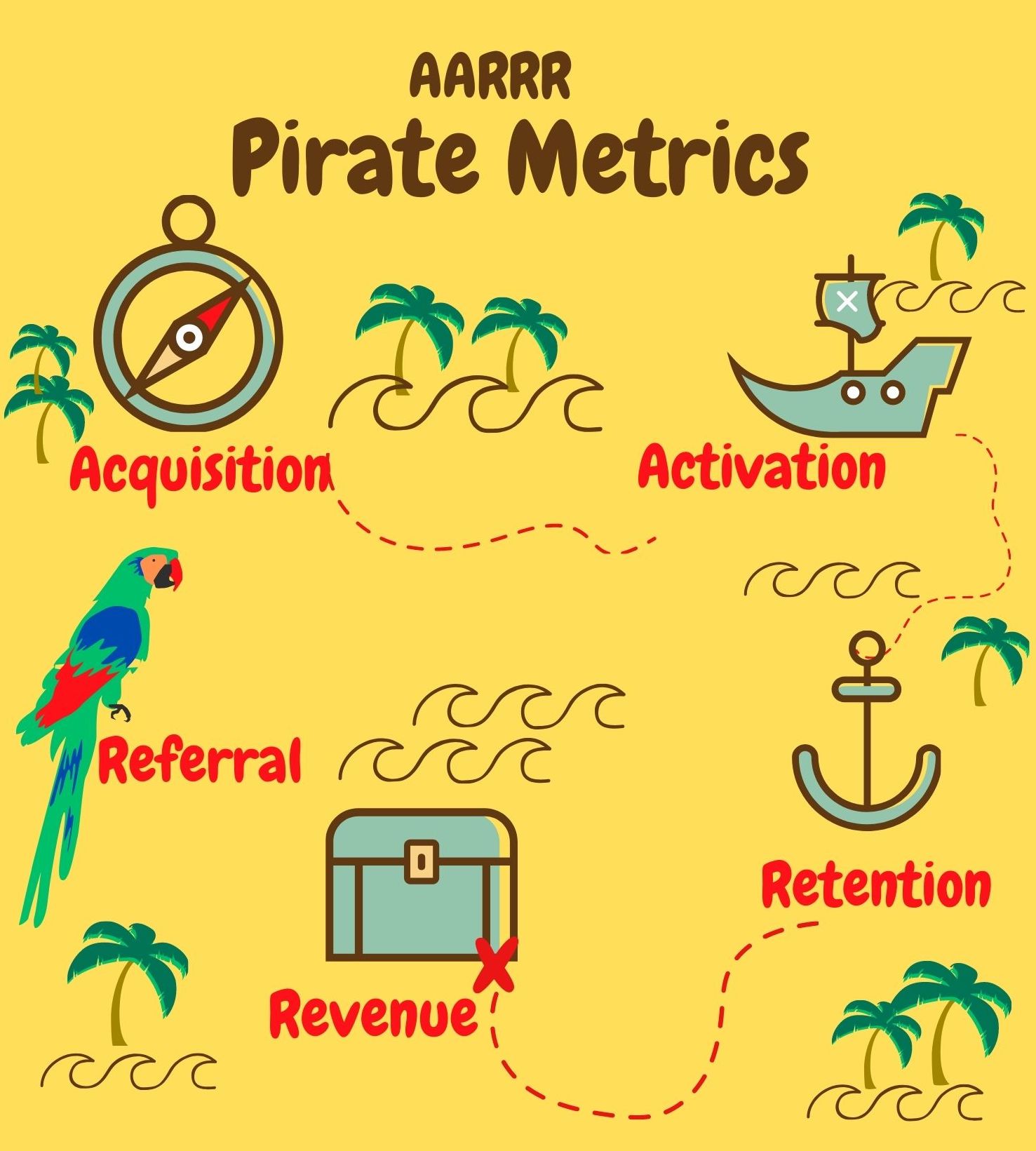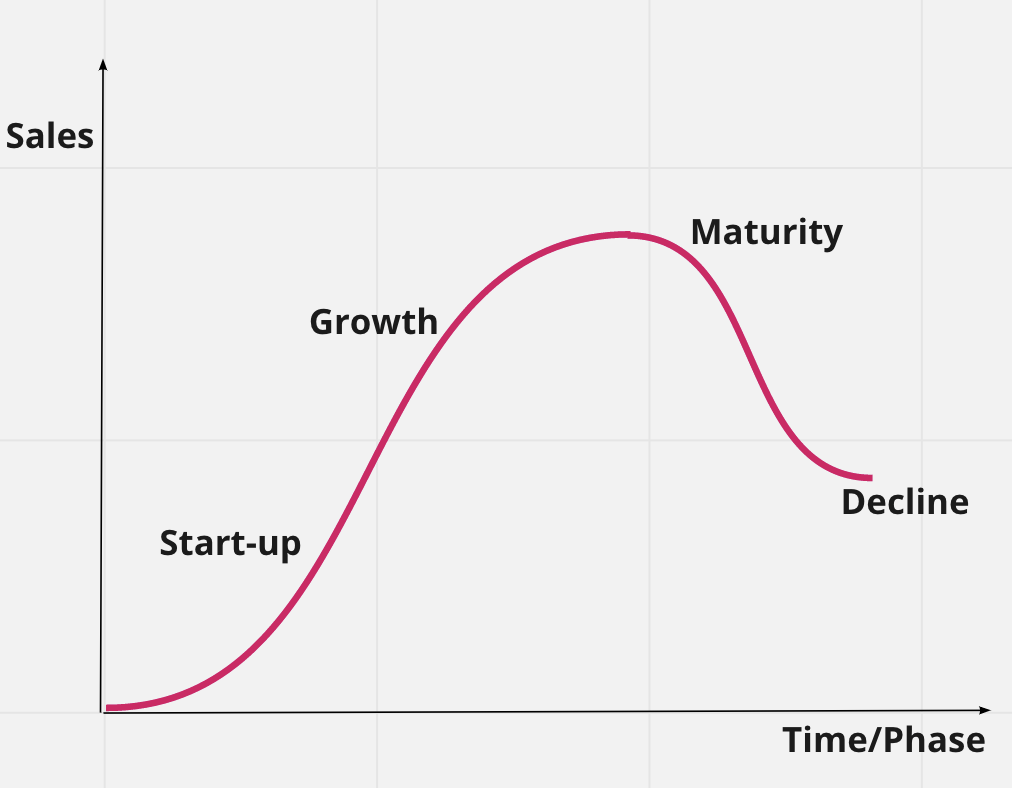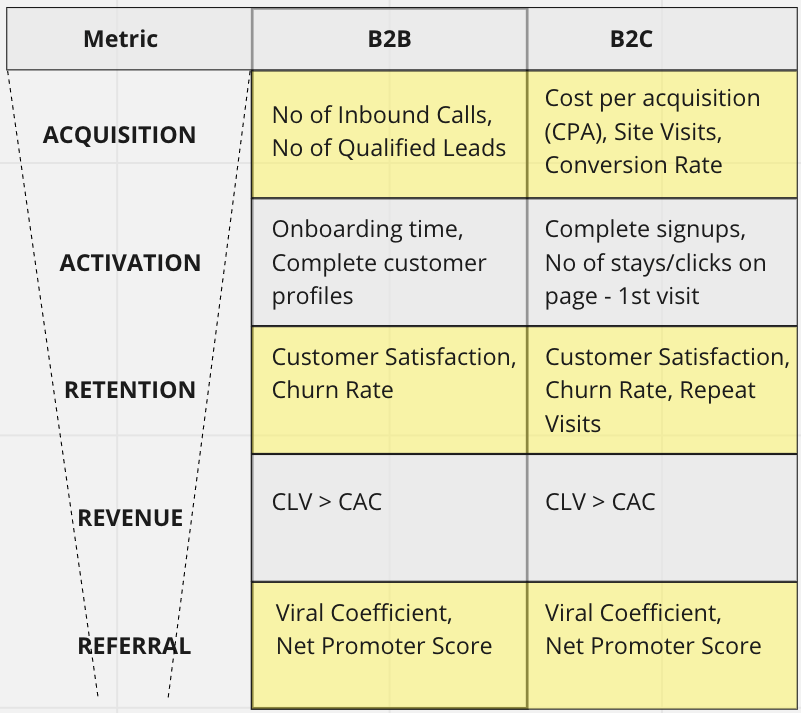How can Pirate Metrics help my business?
What are Pirate Metrics?
This concept was first summarised and presented by Dave McClure as The AARRR framework in 2007. It is a nice summary of the key Product and Marketing metrics that go across the whole funnel: Acquisition, Activation, Retention, Revenue and Referral. Depending on the type of the business the order of them can be slightly changed and adjusted.

Acquisition
How do your customers find out about your business? What are the most effective marketing channels for your business? A really good resource in this space is a book called ‘Traction’ by Gabriel Weinberg, founder of DuckDuckGo. Make sure you focus on channels with the highest conversion, highest volume and lowest cost.
Activation
The customer’s ‘Aha moment’, when they realise the value of your product. This is when they first start using your product, for example they log in and see what you have to offer. If at this moment the product doesn’t seem appealing, then they are less likely to explore it and come back. Activation is probably less important for e-commerce businesses compared to apps and SaaS businesses. However, it is important that the onboarding process is always seamless.
Retention
Do your customers keep on using your product? Are they coming back? Are they loyal to your brand? How many of them leave on average and is this number concerning? It is useful to look at the types of customers that stay with you and ones that don’t, and notice common patterns. High retention rate is a great testament to the quality of your product, otherwise you are dealing with a leaky bucket. This is however all subject to circumstance and the stage of your growth.
Revenue
There probably isn’t one single metric here. The key is to find the best monetisation strategy for your company where Customer Acquisition Cost (CAC) is lower than Customer Lifetime value (CLV); the optimal software industry ratio of CLV to CAC is 3:1, this gives you a good growth rate and sufficient profitability.
Referral
How likely are customers to tell others about your product? The higher your viral coefficient (over 1), the faster your company grows.
Are Pirate Metrics useful for my business?
Every business needs to find customers (Acquisition), and you want them to see the value of your product (Activation). Then, you would like them to stay with you for as long as possible, or at least have positive experience (Retention), and obviously you need to find an effective way to monetise your efforts (Revenue). If your customers are happy with your product or services, they will tell others about it (Referral).
All of those metrics are important for the vast majority of businesses. It is crucial to closely monitor all of them. However, in terms of your business strategy in a given moment, one metric might be more important for you than the other depending on the nature of your work, the stage of your business’ growth and simply your company’s goals.
AARRR and the growth stage

Depending where you are in the product life cycle, you will have very different priorities. If your company is at the very early stage of development you will want to get the product right and make sure you can achieve the Product Market Fit; this will require some acquisition, just enough to validate the need for your product, you’ll also start looking into retention. In the growth stage of your business, this is where you will ramp up your Acquisition channels and also make sure you have the best way to monetise (Revenue), these aspects will also influence customer retention. Referral is also important here as this is a nice and organic way to grow your business and validate that the product is good enough. In the late maturity stage and towards decline, you already have a lot of customers, so you will be keeping a close look at retention and making sure you work on ways to stay competitive. This is obviously a massive simplification, and there are many different external factors that can influence your strategy.
Pirate Metrics in B2B vs B2C companies
Business to Business
If you are dealing with a few valuable clients and the market you operate in is relatively small with big players (e.g. oil and gas industry), then you want to make sure your customers love your product; you can’t probably afford to lose them and also you don’t want to drain through the other players in the market before being ready for it. All of the metrics are important but you will probably be keeping a close eye on Retention the whole time. This is very closely linked to the size of your market and how close your relationships are with your clients.
Business to Consumer
If you offer products or services to consumers, you might not be as upset if a proportion of your customers decide to stop using your product, as this is part of defining your specific market. In fact, in the startup phase this is a big source of your learnings! Obviously, at the later stage, the goal of every company is to provide good quality products that everyone is talking about and explore the most effective marketing channels to reach your customer base!
B2B and B2C companies might be focusing on slightly different metrics for each component of AARRR:

Competition
You must always be wary of your competitors! Your metrics and therefore your entire company strategy can change drastically if there is a new significant player in the market that has the advantage of faster execution and past learnings of their predecessors.